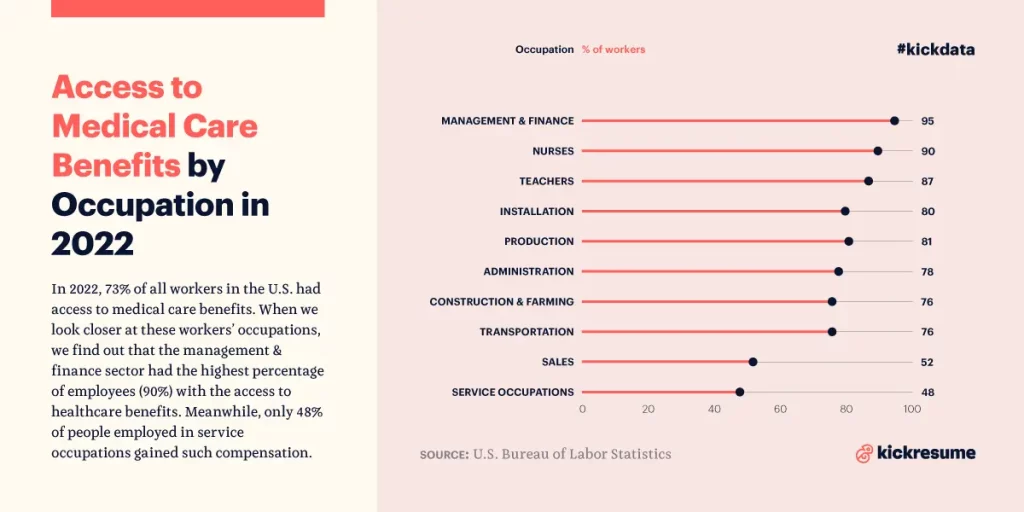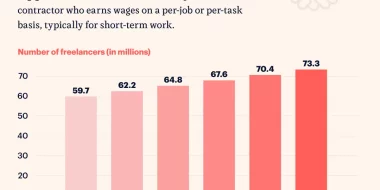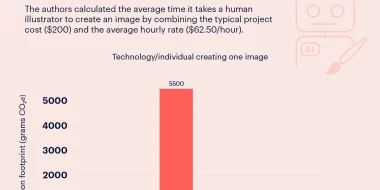Employee Access to Medical Care Benefits by Industry
Employee medical care benefits are, without a doubt, one of the crucial incentives for people to accept a job offer. They usually include medical, dental, vision, or prescription drug coverage to employees and even to their families.
And so, it’s only natural that employers should spend some time choosing the best (not the cheapest) alternative.
Yet, not all workers in the U.S. are provided coverage by their employers when it comes to doctor’s services, hospital care, or drug prescription.
To be exact, 73 percent of all employees in the private sector and state and local government had access to healthcare benefits in March 2022.
Going further into the BLS report, we find out that only 23 percent of part-time and 88 percent of full-time employees were offered coverage.
Medical care benefits were provided to 95% of employees in Finance and Management
Yet another proof that it’s worth working in Finance and Management is the highest rate of employees with access to healthcare benefits in these occupations — 95 percent. In this case, the employer share of the premium represented 79 percent.
Among occupational groups, jobs in service proved to be at the bottom of the list, with only 47 percent of employees having access to employer-sponsored healthcare.
Average healthcare costs reached $13,000 per employee
Any company with more than 50 full-time and part-time workers is legally obliged to offer coverage to at least 95 percent of their full-time employees.
And if you wonder how much a healthcare plan costs an employer, Aon’s recent survey of nearly 700 large employers could provide some answers.
Average healthcare costs for an employer increased by 3.1 percent to more than $13,000 per employee compared to the previous year.
Meanwhile, workers contributed above $4,400 in total for their coverage in 2022 and their out-of-pocket costs soared by 5.2 percent to $1,892.
Healthcare costs are projected to rise by a striking 6.5 percent next year and employers can already feel it.
Although companies in general are averse to increasing their workers’ out-of-pocket expenses, some 14% of employers find it unavoidable.



